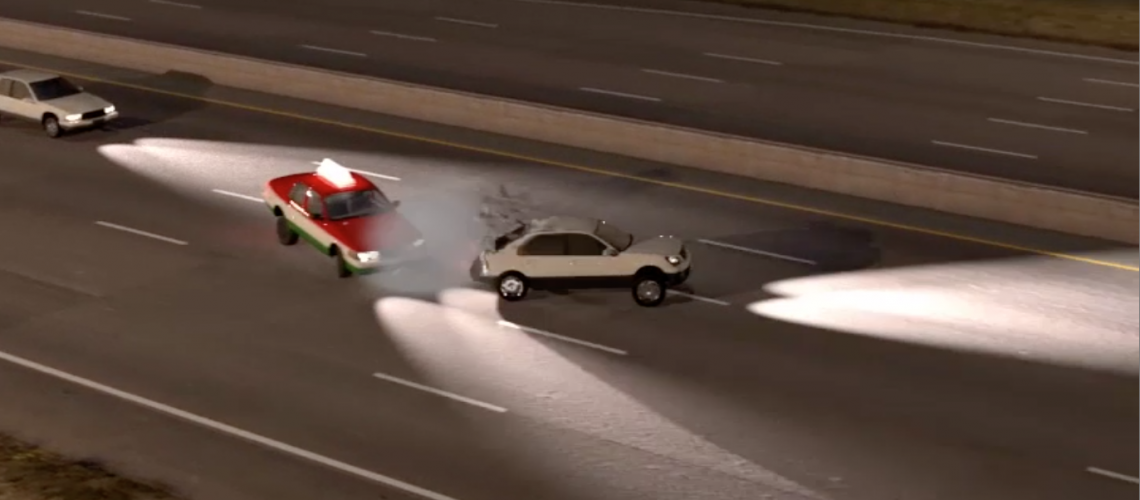 We all know the power of a well-done animation in front of a jury. Such animations can help visually explain concepts in moments instead of in hours. However, they can also be instrumental in settling a case.
We all know the power of a well-done animation in front of a jury. Such animations can help visually explain concepts in moments instead of in hours. However, they can also be instrumental in settling a case.
This fact was true in a recent case handled by Andrew Klimenko of the Choi Law Firm. Andrew hired Cogent Legal to help with a complicated multi-car automobile accident that resulted in the death of one of the occupants. The CHP officer found primary fault with the defendant driver of the cab company, who was speeding and ran into the back of decedent’s Lexus, causing it to spin and subsequently get T-boned by a Cadillac in the other lane. (See excerpts of the police report here.)
Cases sometimes start out simple and get complicated, and this is one of them. During depositions, the witnesses changed their testimony and claimed the Lexus driver actually caused the accident by spinning out of control before the cab hit it. Faced with this confusing set of facts, counsel sought an animation showing his expert’s view on how the incident really occurred based on the evidence. Admissibility would be through the People v. Duenas (2012) 55 Cal.4th 1, a decision allowing animations supporting the testimony of an expert or witness.
I am often asked how the process to create an animation works, so I wanted to take this chance to show you the steps we take at Cogent Legal:
First, we put together the most simple of cartoons to share with the attorney to show the basic movement of the vehicles as we understood the expert to believe. This was done with Keynote, moving rectangles to show each car:
After approval, the next step is doing a wire frame version to assure movement consistent with the expert’s opinions and to allow for any modification before final rendering. Here is what a wire frame version looks like:
Upon final approval, the animation is ready for rendering, an extremely computer-intensive process whereby the computer calculates frame by frame all the lighting, reflections and images. The final output is a series of single frame images that are placed together for making a final animation as shown below. The rendering for this animation took over three days of computer time due to the high level of detail.
In this case the expert brought the animation to his deposition and explained how it showed his opinions on the movements of the vehicles. Not liking what the animations showed against their side, the defense objected to the animation and sought to keep it out of trial by way of Motion in Limine. In a 402 evidentiary hearing before trial started, counsel for plaintiff brought in their expert to testify in support the animation, and prevailed in the ruling to allow it. The case settled shortly after the successful rulings for plaintiff at the Motions in Limine hearing.
If you have any questions about animations or admissibility issues, please do not hesitate to give me a call at (510) 350-7616 or email.
If you’d like to receive updates from this blog, please click to subscribe by email.


